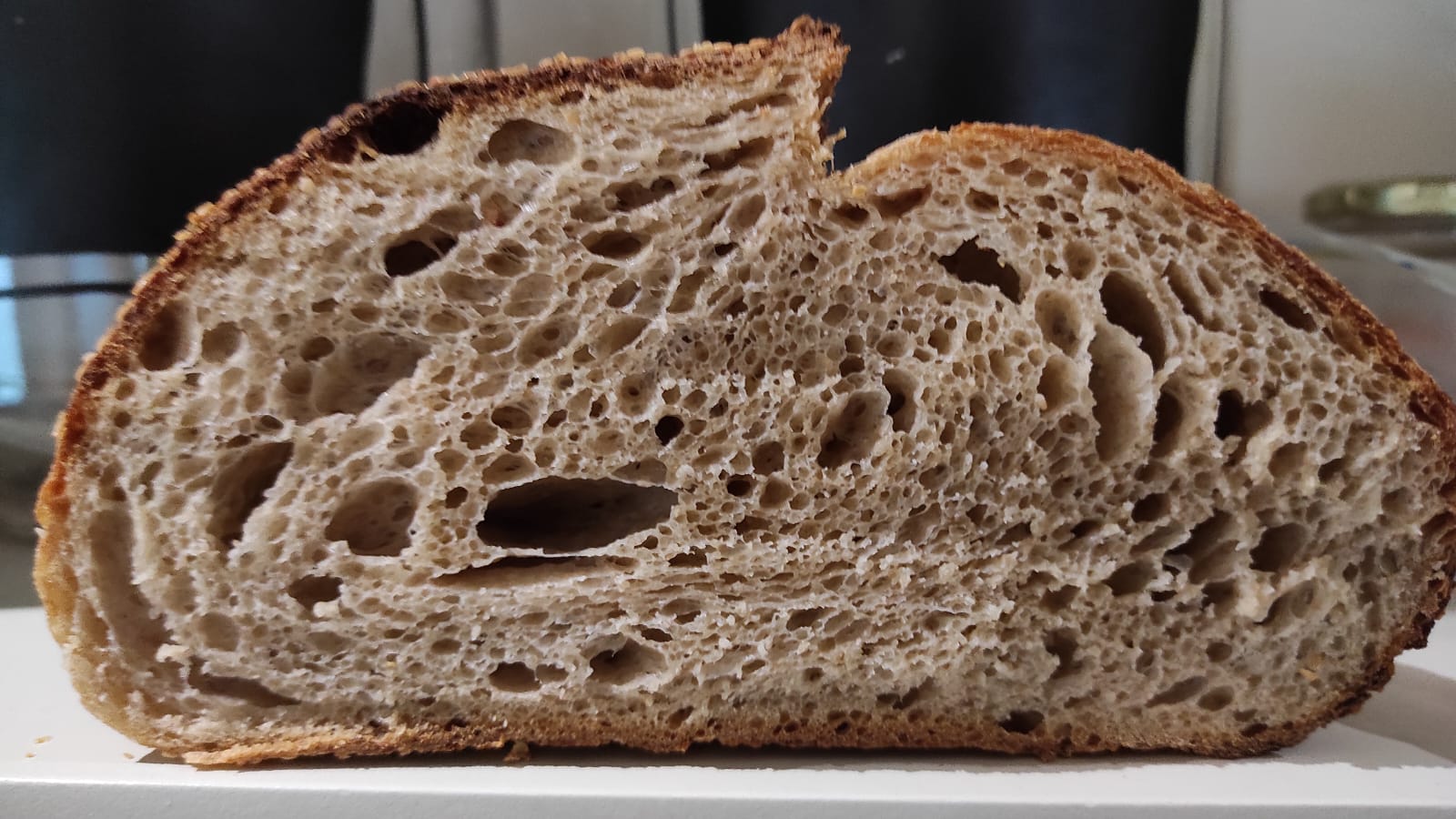I’m inclined to try refrigerating my dough after mixing in the starter to prevent acids from the yeast interfering with the autolysis. But cold usually slows chemical processes too, so this may be counterproductive.
I’m trying to max out the autolysis of the dough, so I don’t need to knead much. Anything more than 3 minutes of kneading feels like too much work.
Adam Ragusea talks about autolysis in this video – he seems to be of the opinion that acid from fermentation is not a factor: https://youtu.be/orpTeX_EGXA?si=n0OxksbbUynUFhJO&t=770
Pictured: My most recent loaf of sourdough. I like the crust, but I did not get enough oven spring.


Refrigeration slows but does not stop autolysis. Peter Reinhart use over night refrigeration during the fermentation (rise) to improve flavour. I can’t remember if it was him or Ken Forkish who provides a process with no traditional kneading, that I adapted as below.
Here’s my process: mix 4 cups flour, 2 cups water and sourdough starter (1/2 or 1 cup). Let sit for 30 minutes (autolyse). Add 2 tsp salt and 1/2 tsp yeast (if using any dry yeast) and mix it in. The dough is quite tacky, so I wet my hands and use pinching motion to mix, then stretch and fold it over itself. Repeat this for about five minutes. (Wash your hands with cold water to remove dough; warm water turns it to glue.) Let rest for 30 minutes. Stretch and fold the dough over itself five or six times, let sit for 30 minutes. Repeat four times. This takes 2h30, and the dough will have risen to be pillowy or the consistency of a marshmallow. Let it rise for another 2-3 hours, or refrigerate over night. Shape, proof and bake.